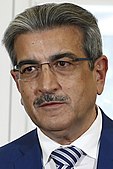2023 Canarian regional election
| |||||||||||||||||||||||||||||||||||||||||||||||||||||||||||||||||||||||||||||||||||||||||||||||||
All 70 seats in the Parliament of the Canary Islands 36 seats needed for a majority | |||||||||||||||||||||||||||||||||||||||||||||||||||||||||||||||||||||||||||||||||||||||||||||||||
|---|---|---|---|---|---|---|---|---|---|---|---|---|---|---|---|---|---|---|---|---|---|---|---|---|---|---|---|---|---|---|---|---|---|---|---|---|---|---|---|---|---|---|---|---|---|---|---|---|---|---|---|---|---|---|---|---|---|---|---|---|---|---|---|---|---|---|---|---|---|---|---|---|---|---|---|---|---|---|---|---|---|---|---|---|---|---|---|---|---|---|---|---|---|---|---|---|---|
| Opinion polls | |||||||||||||||||||||||||||||||||||||||||||||||||||||||||||||||||||||||||||||||||||||||||||||||||
| |||||||||||||||||||||||||||||||||||||||||||||||||||||||||||||||||||||||||||||||||||||||||||||||||
| |||||||||||||||||||||||||||||||||||||||||||||||||||||||||||||||||||||||||||||||||||||||||||||||||
The next Canarian regional election will be held no later than Sunday, 28 May 2023, to elect the 11th Parliament of the Autonomous Community of the Canary Islands. All 70 seats in the Parliament will be up for election.
Overview
Electoral system
The Parliament of the Canary Islands is the devolved, unicameral legislature of the autonomous community of the Canary Islands, having legislative power in regional matters as defined by the Spanish Constitution and the Canarian Statute of Autonomy, as well as the ability to vote confidence in or withdraw it from a regional president.[1]
Voting for the Parliament is on the basis of universal suffrage, which comprises all nationals over eighteen, registered in the Canary Islands and in full enjoyment of their political rights. Additionally, Canarians abroad are required to apply for voting before being permitted to vote, a system known as "begged" or expat vote (Template:Lang-es).[2] The 70 members of the Parliament of the Canary Islands are elected using the D'Hondt method and a closed list proportional representation, with a threshold of 15 percent of valid votes—which includes blank ballots—being applied in each constituency. Parties not reaching the threshold are not taken into consideration for seat distribution. Alternatively, parties can also enter the seat distribution as long as they reach four percent regionally. Seats are allocated to constituencies, corresponding to the islands of El Hierro, Fuerteventura, Gran Canaria, La Gomera, La Palma, Lanzarote and Tenerife, as well as an additional constituency comprising the whole archipelago, with each being allocated a fixed number of seats: 3 for El Hierro, 8 for Fuerteventura, 15 for Gran Canaria, 4 for La Gomera, 8 for La Palma, 8 for Lanzarote, 15 for Tenerife and 9 for the regional constituency.[1]
Election date
The term of the Parliament of the Canary Islands expires four years after the date of its previous election. Elections to the Parliament are fixed for the fourth Sunday of May every four years. The previous election was held on 26 May 2019, setting the election date for the Parliament on Sunday, 28 May 2023.[1][3][4]
The president has the prerogative to dissolve the Parliament of the Canary Islands and call a snap election, provided that no motion of no confidence is in process and that dissolution does not occur before one year has elapsed since the previous one. In the event of an investiture process failing to elect a regional president within a two-month period from the first ballot, the Parliament shall be automatically dissolved and a fresh election called. Any snap election held as a result of these circumstances will not alter the period to the next ordinary election, with elected deputies merely serving out what remains of their four-year terms.[1]
Opinion polls
The table below lists voting intention estimates in reverse chronological order, showing the most recent first and using the dates when the survey fieldwork was done, as opposed to the date of publication. Where the fieldwork dates are unknown, the date of publication is given instead. The highest percentage figure in each polling survey is displayed with its background shaded in the leading party's colour. If a tie ensues, this is applied to the figures with the highest percentages. The "Lead" column on the right shows the percentage-point difference between the parties with the highest percentages in a given poll. When available, seat projections are also displayed below the voting estimates in a smaller font. 36 seats are required for an absolute majority in the Parliament of the Canary Islands.
Notes
References
- Opinion poll sources
- ^ "EP (17My): Canarias – Torres se afianza". Electomanía (in Spanish). 17 May 2020.
- ^ "MacroPanel Autonómico (17My): 8 gobiernos para PSOE+, 8 para PP+ y 3 para otros+". Electomanía (in Spanish). 17 May 2020.
- Other
- ^ a b c d Ley Orgánica 1/2018, de 5 de noviembre, de reforma del Estatuto de Autonomía de Canarias. Boletín Oficial del Estado (Organic Law 1) (in Spanish). 5 November 2018. Retrieved 6 November 2018.
- ^ Reig Pellicer, Naiara (16 December 2015). "Spanish elections: Begging for the right to vote". cafebabel.co.uk. Retrieved 17 July 2017.
- ^ Ley 7/2003, de 20 de marzo, de Elecciones al Parlamento de Canarias. Boletín Oficial del Estado (Law 7) (in Spanish). 20 March 2003. Retrieved 12 September 2017.
- ^ Ley Orgánica 5/1985, de 19 de junio, del Régimen Electoral General. Boletín Oficial del Estado (Organic Law 5) (in Spanish). 19 June 1985. Retrieved 30 January 2020.






